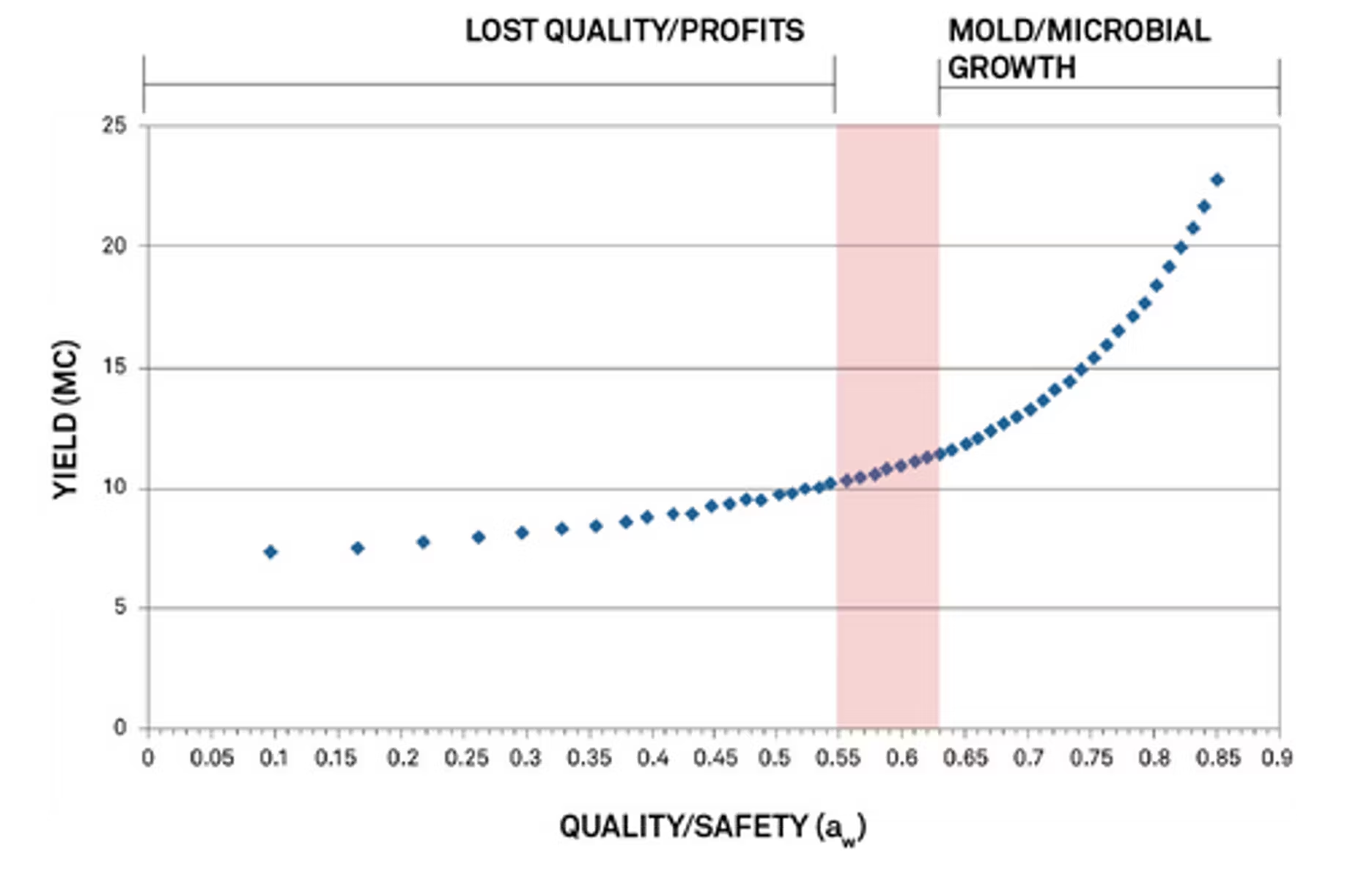Education Guide
Addium articles:
The ultimate guide to a layout on the website

As research continues into the medicinal potential of cannabis terpenes, we’re learning more about their ability to produce a range of effects in collaboration with other compounds from the plant. In this article, we explore the relationship between terpenes and cannabinoids in what’s known as the entourage effect.
Dynamic crop management with automated greenhouses
Traditional irrigation systems with static set points often fail to meet the evolving needs of crops. Automated greenhouses offer adaptive irrigation strategies that adjust in real-time based on environmental variables like temperature, humidity, and light levels. This precision control allows for effective crop steering techniques, ensuring each plant receives optimal care. Moreover, automated systems enable customizable programs for multiple cultivars and growth stages within the same greenhouse, providing tailored solutions for diverse plant needs.
Mastering irrigation strategy and EC management
Balancing water delivery and nutrient availability is crucial for healthy crop growth. Automated greenhouse systems provide continuous, real-time monitoring of substrate moisture and electrical conductivity (EC) levels. Intelligent irrigation scheduling matches plant needs throughout their lifecycle, while automated EC management maintains optimal nutrient availability. By integrating leachate analysis, these systems enable data-driven fertigation adjustments, ensuring crops receive exactly what they need when they need it.
A table embeded in the page
We can just copy and paste the html from the current site.
Precision fertigation in automated greenhouses
Inconsistent nutrient delivery can significantly impact crop health and yield. Automated fertigation systems within greenhouses address this issue by providing high-precision nutrient dosing for consistent and accurate fertilizer application. Automated pH and EC management, coupled with real-time nutrient monitoring, prevent imbalances before they affect your crops. Customizable fertigation programs for different growth stages and cultivars ensure each plant receives tailored nutrition throughout its lifecycle.
How to calculate drybacks
Accurately calculating drybacks is essential for effective irrigation management. Here's how you can do it:
Step-by-Step Guide
- Measure pre-watering moisture content:
- Use a substrate sensor to record the VWC before irrigation.
- Alternatively, weigh the plant and pot if sensors are unavailable.
- Irrigate the plant:
- Water thoroughly until runoff is achieved to ensure uniform moisture distribution.
- Measure post-watering moisture content:
- After allowing excess water to drain, measure the VWC again using the same method.
- Calculate the dryback:
- Subtract the pre-watering VWC from the post-watering VWC.
- Dryback (%) = Post-Watering VWC (%) - Pre-Watering VWC (%)
Example Calculation
- Pre-Watering VWC: 60%
- Post-Watering VWC: 80%
- Dryback: 80% - 60% = 20% Dryback
Measuring moisture content: speed vs. “accuracy”
There are many different methods of determining moisture content in cannabis, but the most common is loss-on drying. The sample is weighed, dried, and weighed again.
Assuming you’ve gotten the cannabis sample fully dry, you can take the difference in weight and determine what percentage of the sample was water (for more details on this, see the “Scientific definition of moisture content” section of this guide).
There are several assumptions behind this method. The first is the assumption that the sample is fully dry. But there is no way to know whether or not you have removed all the moisture from your cannabis sample. As a result, there’s no definition of “dry” for any substance, and no standard to use in evaluating different methods of loss-on-drying. That’s why the word accuracy in the title of this section is in quotation marks. Because it is not possible to evaluate measurement methods against an accepted standard, it is not possible to determine the accuracy of each method. When you see a stated accuracy in relation to a moisture content method, it is more likely referring to precision.
.avif)
Environmental harmony through integrated automation
A truly optimized greenhouse requires seamless coordination between all environmental factors. Automated greenhouse systems provide synchronized control of irrigation, climate, and lighting systems. This holistic approach enables data-driven decision-making based on comprehensive environmental monitoring. The system makes automated adjustments to maintain ideal growing conditions as external factors change, creating a harmonious environment that promotes optimal plant growth.

Here’s how other chemical compounds in cannabis factor into the entourage effect:
- Cannabichromene (CBC): Non-psychoactive CBC contributes to the plant’s anti-inflammatory effects and reportedly demonstrates antimicrobial, analgesic, and antidepressant properties. CBC’s influence over the endocannabinoid system centers on its ability to inhibit anandamide uptake. It was also found to enhance THC’s cytotoxic properties and increase the effectiveness of CBD extracts.
- Cannabichromene (CBG): Considered “the mother of all cannabinoids”, CBG shares THC’s ability to work as a partial agonist of CB1 and CB2 receptors. Like CBD, it’s non-psychoactive and offers potential relief against pain, insomnia, anxiety, and depression. While preliminary research shows CBG to be ineffective against inflammation on its own, it reportedly enhances CBD’s ability to soothe inflammation.
- Cannabinol (CBN): An oxidized metabolite of THC, CBN demonstrates potential sedative, anti-inflammatory, antibiotic, and anticonvulsant properties. CBN has about ¼ the potency of THC and some research indicates it may increase the sedative properties of both THC and CBD.
- Δ9- Tetrahydrocannabivarin (THCV): THCV is a non-psychoactive cannabinoid that shows potential appetite-suppressing and neuroprotective properties. While research is limited, one study found that THCV may inhibit THC’s psychoactive effects.
Read more about terpenes and their role in the entourage effect here.
Choose the Right Grow Medium
Part of selecting the right grow medium involves deciding which substrate can offer plants the best possible moisture retention. Indoor growers weighing coco versus Rockwool, for example, have several factors to consider that can impact the rooting process. For example, coco’s higher cation exchange capacity makes it less susceptible to quick changes, plus it’s typically more forgiving than Rockwool. But growers have long used Rockwool in hydroponic setups due largely to its ability to retain water longer. Whichever substrate a grower chooses, they must create the optimal rooting-in environment by ensuring the medium is properly pre-soaked and pH-balanced.
References
- Baron, E.P., Lucas, P., Eades, J. et al. Patterns of medicinal cannabis use, strain analysis, and substitution effect among patients with migraine, headache, arthritis, and chronic pain in a medicinal cannabis cohort. J Headache Pain 19, 37 (2018). https://doi.org/10.1186/s10194-018-0862-2
- Eddin LB, Jha NK, Meeran MFN, Kesari KK, Beiram R, Ojha S. Neuroprotective Potential of Limonene and Limonene Containing Natural Products. Molecules. 2021 Jul 27;26(15):4535. doi: 10.3390/molecules26154535. PMID: 34361686; PMCID: PMC8348102.
- Jang HI, Rhee KJ, Eom YB. Antibacterial and antibiofilm effects of α-humulene against Bacteroides fragilis. Can J Microbiol. 2020 Jun;66(6):389-399. doi: 10.1139/cjm-2020-0004. Epub 2020 Feb 19. PMID: 32073898.
- Jha NK, Sharma C, Hashiesh HM, Arunachalam S, Meeran MN, Javed H, Patil CR, Goyal SN, Ojha S. β-Caryophyllene, A Natural Dietary CB2 Receptor Selective Cannabinoid can be a Candidate to Target the Trinity of Infection, Immunity, and Inflammation in COVID-19. Front Pharmacol. 2021 May 14;12:590201. doi: 10.3389/fphar.2021.590201. PMID: 34054510; PMCID: PMC8163236.
- Jing L, Zhang Y, Fan S, Gu M, Guan Y, Lu X, Huang C, Zhou Z. Preventive and ameliorating effects of citrus D-limonene on dyslipidemia and hyperglycemia in mice with high-fat diet-induced obesity. Eur J Pharmacol. 2013 Sep 5;715(1-3):46-55. doi: 10.1016/j.ejphar.2013.06.022. Epub 2013 Jul 6. PMID: 23838456.
